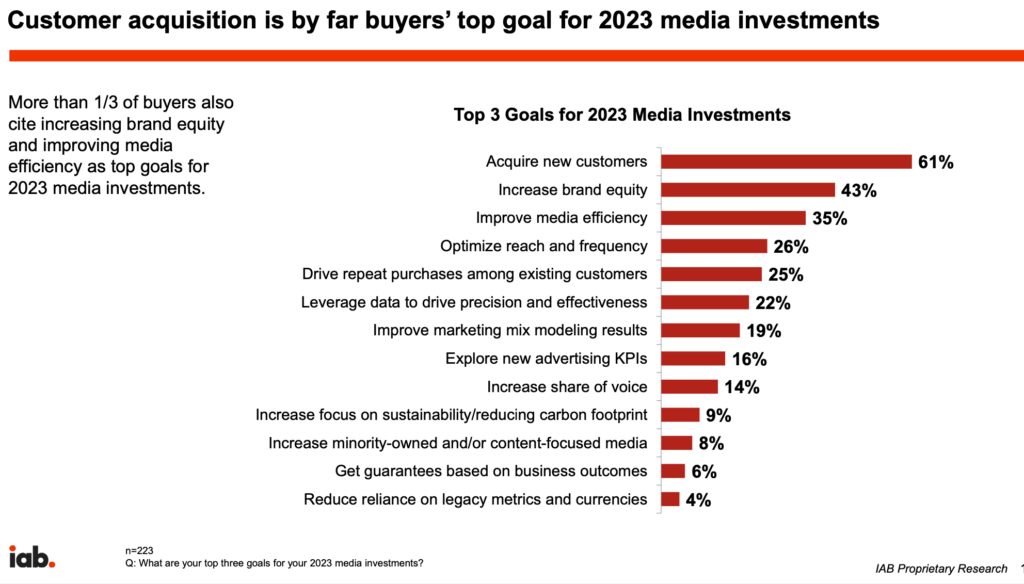In a nutshell:
- Look-alike modeling is a key initiative in creating targeted audience segments and driving results for campaigns.
- It identifies behaviors and traits of ideal customers to find similar audiences for higher engagement rates.
- Predictive analytics supports look-alike modeling by refining models based on behavioral patterns.
- Examples show how predictive analytics can improve campaign conversion rates and customer retention.
- To get started, prepare customer data, build AI models, and automate the process for efficient audience creation.
Look-alike modeling is a key initiative in creating targeted audience segments and in driving results for a campaign or marketing initiative. It’s “an important part of the media toolkit … allowing brands to increase their audience pool,” experts say.
Look-alike modeling grew in importance over the past few years. In particular, that’s because regulatory bodies are weighing in on how publishers, brands, ad networks, DSPs, mobile apps, social media, and others collect and use data.
As a result, these changes, plus uncertainty around third-party cookies and increasing customer acquisition costs, have motivated companies to explore sophisticated audience modeling. This modeling approach bolsters audience expansion and revenue generation initiatives.
What is Look-alike Modeling?
Look-alike modeling is a sophisticated technique that seeks to identify the behaviors, demographics, and other shared traits of your ideal customers. These may be high-LTV customers, those who upgraded from a free trial, prospects requesting a demo, or other behaviors you want to obtain more often.
Accordingly, these ideal customers are the “seed set.” Using their data, you can build a mathematical model that parses their information to identify meaningful patterns. (While this sounds complex, low-code predictive analytics platforms make this process accessible to data and marketing analysts.) Then, the model can then analyze data about other potential customers to look for the same patterns. This analysis highlights the individuals who are most likely to behave in similar ways.
Why Use Look-alike Models in Your Marketing Campaigns?
For advertising, the broader audience who is personally similar to or behaves similarly to your ideal customer will likely engage similarly to those in the seed set. By reaching out to that audience, you can drive higher campaign engagement rates and outcomes.
With the development of machine learning capabilities, look-alike modeling is becoming more sophisticated. Companies can build models to seek audiences similar to their most profitable customers. In addition, they can refine the models to adapt to new developments or changes in the marketplace.
How Does Predictive Analytics Support Look-alike Modeling?
Based on machine learning algorithms, predictive analytics supports look-alike modeling by enabling model refinement based on behavioral patterns among seed sets. With this purpose in mind, these changes among seed sets can be weighted based on their impact on KPIs and outcomes.
This continuous refinement ensures marketers are always on top of the latest trends in customer behavior. In fact, ongoing model maintenance maximizes models’ positive effects. Predictive analytics can also use far more data points from customer data than typical ad platforms. This ability makes your predictions more accurate and relevant to the behavior you want among future customers.
Due to today’s proliferation of data, brands, advertisers, and publishers must use more advanced AI and machine learning to keep pace with the changing landscape and customer trends.
Examples of predictive analytics for audience modeling and marketing campaigns:
- E-Commerce: A well-known e-commerce company built and deployed a predictive upsell model within two weeks. This model doubled their campaign conversion rates.
- CPG: A household CPG brand was able to detect roughly 85% of churn and lower global churn by over 10%.
- Mobile gaming: A mobile gaming company was able to identify VIP customers and improve the lifetime value of their users. They saw an uplift in spending per user of 3.5x.
How Can Your Team Get Started?
In order to get started leveraging look-alike modeling, you’ll need to prepare your customer data. Then, build AI models for predicting who should be included in a look-alike audience. Identifying the highest lifetime value customers allows you to create models with the largest impact on your business.
This process does not have to be time-consuming. As a matter of fact, with automated data prep and AutoML, you can eliminate 80% of the time required in traditional data science. It’s possible to automate much of the data preparation, feature engineering, model building, and model evaluation.
After identifying your high-CLV audience with predictive modeling, you can plug these segments into your CDP, DMP, MMP, DSP, social media, or ad platform. These platforms will then create look-alike audiences.
All major ad platforms (including Google and Meta) provide step-by-step instructions for connecting your audiences to their platform for look-alike audience creation.
Make the most of your customer data by identifying your best customers and then finding more like them — so you can watch your business grow.
We'd love to share more about how AI can help you achieve your marketing goals. Sign up for a demo today.



